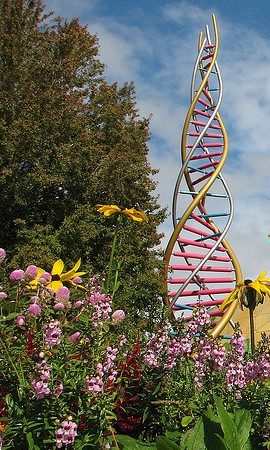
Twenty-thousand is the average gene count in wolves, fish, and birds. Over 16,000 is the number of living things on the Endangered Species List. Fourteen is the number of ecology experts that led a workshop on genomic science and its applications for conservation for fifteen budding biologists from eleven universities.
Genes are the molecular units of heredity in living organisms. Examining this biological blueprint, a species’ history, can reveal the key to its future. Interpreting genetic data can help solve some of the most pressing problems in biological conservation and offer significant contributions to the ability to identify and protect at-risk populations and recover those that are most endangered. Founded to teach, train, further research, and encourage policy change, the La Kretz Center organized a week-long workshop at its living laboratory in the Santa Monica Mountains.
Graduate students from schools in England, Canada, Missouri, Tennessee, North Carolina, Arizona, and throughout California participated in this conservation genomics workshop. Christopher Durrant from the Institute of Zoology in London said, “With the increasing use of next generation sequencing for molecular ecology, my institute felt that it was essential that I gain grounding in these techniques. This course looked to have the most rounded curriculum, in regards to the work we hope to undertake.”
Taylor Edwards, a doctoral candidate at the University of Arizona’s School of Natural Resources and the Environment, explained why he participated. “I am in the finishing stages of my dissertation and am looking for advice on how to interpret and analyze my genomic data. Having the opportunity to discuss my questions one-on-one with experts was a great opportunity.”
He added, “Dr. Shaffer (faculty director of the center) has an excellent reputation for hosting workshops and fostering productive environments.”
The curriculum incorporated instruction, hands-on exercises, and presentations. Lectures covered traditional conservation genetics, tools, and data management and analysis. Topics addressed also included geographic information system (GIS) evaluation. GIS is designed to capture, store, manipulate, analyze, manage, and present all types of geographical data.
Representatives from the National Park Service, the United States Geological Survey, and the Federal Fish and Wildlife Service delivered presentations with the goal of demonstrating what governmental agencies need and want from academics in order to make the most informed decisions on how best to conserve biodiversity.
This is the first major symposium hosted at the field station since it opened at the beginning of the year. Christopher felt the location was an ideal choice for the workshop. He said, “The field station is fantastic – it certainly beats sitting in a stuffy class room or lecture theater. After you’ve just spent hours looking at a computer screen trying to understand some piece of scripting and you step outside and lookout at the surrounding countryside, it reminds you what it’s all for.”
Taylor agreed with this assertion. “This was a beautiful location – above and beyond what is expected for a field station. The location helped to foster intellectual conversation by keeping the group close together in such pleasant surroundings.”
This workshop is set to be an annual engagement that brings conservation biologists, agency partners, and scholars together in a natural setting to conduct evolutionary analysis. The intent of the program is to advance the preservation of populations of living things across the planet.
Photo credit: Flickr, jackskellington101
